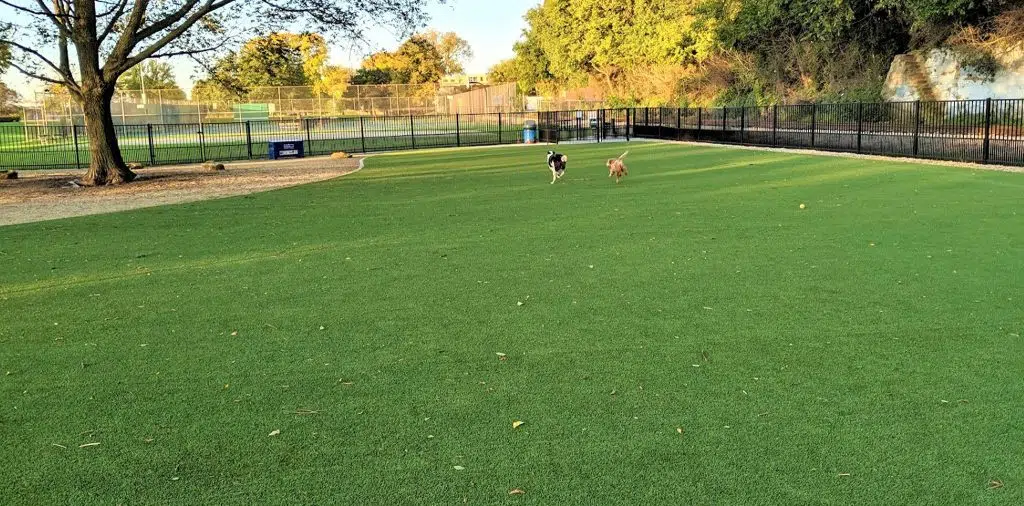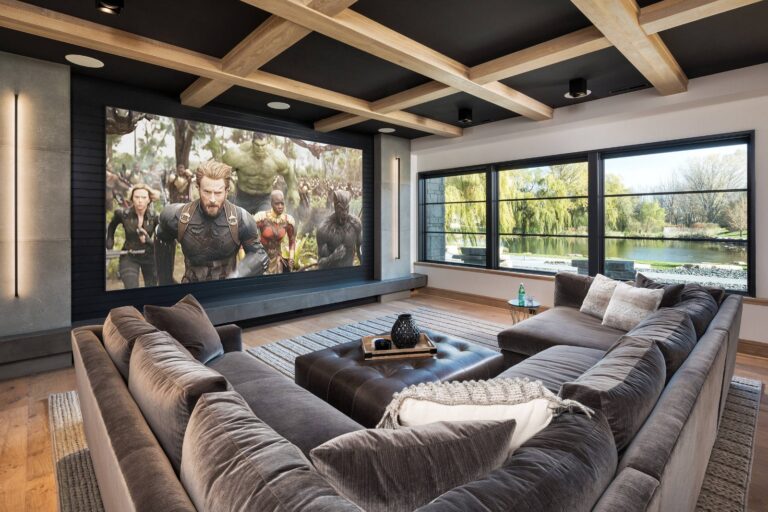Transform Your Landscape with the Perfect Turf
When it comes to transforming your outdoor space, choosing the right turf can make all the difference. Whether you’re an athlete looking for a durable surface, a fitness enthusiast seeking the perfect workout ground, or a homeowner wanting a lush, green lawn, selecting the ideal turf is crucial.
This blog post will guide you through the process of picking the best turf for your needs, offering valuable insights, practical tips, and examples that cater to your specific interests.
Understanding Different Types of Turf
Natural Grass
Natural grass is the traditional choice for many landscapes. It offers a soft, natural feel underfoot and can be aesthetically pleasing. However, natural grass requires regular maintenance, including mowing, watering, and fertilizing. It’s also susceptible to damage from heavy foot traffic, making it less ideal for athletic fields or fitness areas.
Synthetic Turf
Synthetic turf is an excellent alternative to natural grass. Made from artificial materials, it mimics the look and feel of natural grass but requires less maintenance. Synthetic turf is durable, withstands heavy use, and is perfect for sports fields and gym areas. Additionally, it doesn’t need watering or fertilizing, making it eco-friendly.
Hybrid Turf
Hybrid turf combines natural grass with synthetic fibers, offering the best of both worlds. This type of turf provides the natural look and feel of grass with the durability of synthetic materials. It’s an excellent choice for areas that experience moderate to heavy use, such as sports fields and high-traffic lawns.
Factors to Consider When Choosing Turf
Climate
Your local climate plays a significant role in determining the best type of turf for your landscape. Natural grass varieties thrive in different climates, so it’s essential to choose one suited to your region. For example, Bermuda grass is excellent for warm climates, while Kentucky bluegrass is ideal for cooler areas. Synthetic and hybrid turfs are more versatile and can be used in various climates.
Usage
Consider how you plan to use your turf. If you’re an athlete or fitness enthusiast, you’ll need a turf that can withstand heavy use and provide a safe surface for activities. Synthetic turf is a great option for sports fields and workout areas due to its durability and low maintenance. Homeowners looking for a beautiful lawn may prefer natural or hybrid turf for their aesthetic appeal.
Maintenance
Different types of turf require varying levels of maintenance. Natural grass needs regular mowing, watering, and fertilizing to stay healthy and green. Synthetic turf, on the other hand, requires minimal upkeep—just occasional brushing and cleaning. Hybrid turf falls somewhere in between, needing less maintenance than natural grass but more than synthetic turf.
The Benefits of Synthetic Turf
Durability
One of the most significant advantages of synthetic turf is its durability. It can withstand heavy foot traffic, making it perfect for sports fields and fitness areas. Unlike natural grass, synthetic turf doesn’t get damaged easily, ensuring a long-lasting, high-quality surface.
Low Maintenance
Synthetic turf requires minimal maintenance, saving you time and effort. There’s no need to mow, water, or fertilize, which can be particularly beneficial in areas with water restrictions. A simple brush and occasional cleaning are all that’s needed to keep synthetic turf looking its best.
Eco-Friendly
By choosing synthetic turf, you’re also making an environmentally friendly choice. Since it doesn’t require watering or fertilizing, you’ll conserve water and reduce the use of chemicals. Additionally, many synthetic turfs are made from recycled materials, further reducing your environmental footprint.
The Aesthetic Appeal of Natural Grass
Natural Beauty
There’s no denying the natural beauty of a lush, green lawn. Natural grass provides a soft, inviting surface that’s perfect for relaxing, playing, and entertaining. It can enhance the overall appearance of your landscape, adding value to your property.
Cooling Effect
Natural grass has a natural cooling effect, which can help lower the temperature around your home. This can be particularly beneficial in hot climates, providing a more comfortable outdoor environment.
Environmental Benefits
Natural grass offers several environmental benefits, including improved air quality and reduced erosion. Grass absorbs carbon dioxide and releases oxygen, helping to purify the air. Additionally, its root system helps prevent soil erosion, protecting your landscape.
The Versatility of Hybrid Turf
Best of Both Worlds
Hybrid turf combines the natural look and feel of grass with the durability of synthetic materials. This makes it an excellent choice for areas that experience moderate to heavy use, providing a long-lasting, attractive surface.
Reduced Maintenance
While hybrid turf requires some maintenance, it’s less demanding than natural grass. You’ll still need to mow and water occasionally, but the synthetic fibers help reduce wear and tear, keeping your lawn looking great with less effort.
Adaptability
Hybrid turf is adaptable to various climates and soil conditions, making it a versatile option for many landscapes. Whether you’re dealing with extreme heat, cold, or poor soil quality, hybrid turf can provide a reliable, attractive solution.
How to Install Your Turf
Preparing the Ground
Before installing your turf, it’s essential to prepare the ground properly. This involves removing any existing grass, weeds, or debris and leveling the soil. If you’re installing synthetic or hybrid turf, you may also need to create a base layer of crushed stone or sand to ensure proper drainage.
Laying the Turf
Once the ground is prepared, you can start laying your turf. For natural grass, this involves spreading grass seed or laying sod. For synthetic or hybrid turf, roll out the turf and secure it with nails or adhesive. Make sure to follow the manufacturer’s instructions for the best results.
Maintaining Your Turf
After installation, it’s crucial to maintain your turf to keep it looking its best. Natural grass will need regular mowing, watering, and fertilizing. Synthetic turf requires occasional brushing and cleaning to remove debris. Hybrid turf falls somewhere in between, needing less maintenance than natural grass but more than synthetic turf.
Choosing the Right Turf for Athletes
Safety
Athletes need a safe, reliable surface to perform at their best. Synthetic turf provides a consistent, cushioned surface that reduces the risk of injuries. It’s also designed to drain quickly, preventing slippery conditions after rain.
Performance
Synthetic turf offers excellent performance characteristics, including consistent ball bounce and traction. This makes it ideal for sports fields, where performance is critical. Many professional sports teams use synthetic turf for its reliability and low maintenance.
Longevity
With its durability and low maintenance, synthetic turf is a long-lasting solution for athletic fields. It can withstand heavy use without becoming damaged, ensuring a high-quality surface for years to come.
Choosing the Right Turf for Fitness Enthusiasts
Comfort
Fitness enthusiasts need a comfortable surface for their workouts. Synthetic turf provides a cushioned, supportive surface that’s gentle on joints, making it perfect for activities like yoga, Pilates, and strength training.
Durability
Synthetic turf is highly durable, making it ideal for high-impact workouts. It can withstand heavy use without becoming damaged, ensuring a long-lasting, reliable surface for your fitness routine.
Low Maintenance
With its low maintenance requirements, synthetic turf is a convenient choice for fitness enthusiasts. There’s no need to worry about mowing, watering, or fertilizing—just focus on your workout and enjoy a clean, comfortable surface.
Choosing the Right Turf for Homeowners
Aesthetic Appeal
Homeowners often prioritize the aesthetic appeal of their landscape. Natural grass and hybrid turf offer a beautiful, lush appearance that enhances the overall look of your property.
Low Maintenance
For homeowners seeking a low-maintenance option, synthetic turf is an excellent choice. It requires minimal upkeep, saving you time and effort while still providing a beautiful, green lawn.
Environmental Benefits
By choosing synthetic or hybrid turf, homeowners can enjoy the environmental benefits of reduced water usage and fewer chemicals. This makes it a sustainable choice that’s better for the planet.
Incorporating Landscaping Stones
Adding landscaping stones Syracuse to your turf can enhance its appearance and functionality. Stones can create pathways, borders, and decorative features that complement your turf. They also help with drainage and reduce the amount of grass you need to maintain.
Choosing the right turf for your landscape is a crucial decision that depends on your needs, preferences, and lifestyle. Whether you’re an athlete, fitness enthusiast, or homeowner, understanding the different types of turf and their benefits can help you make an informed choice. Consider factors like climate, usage, and maintenance to select the best turf for your outdoor space. By making the right choice, you’ll enjoy a beautiful, functional landscape that meets your needs.
Keep an eye for more news & updates on Buzz Released!

